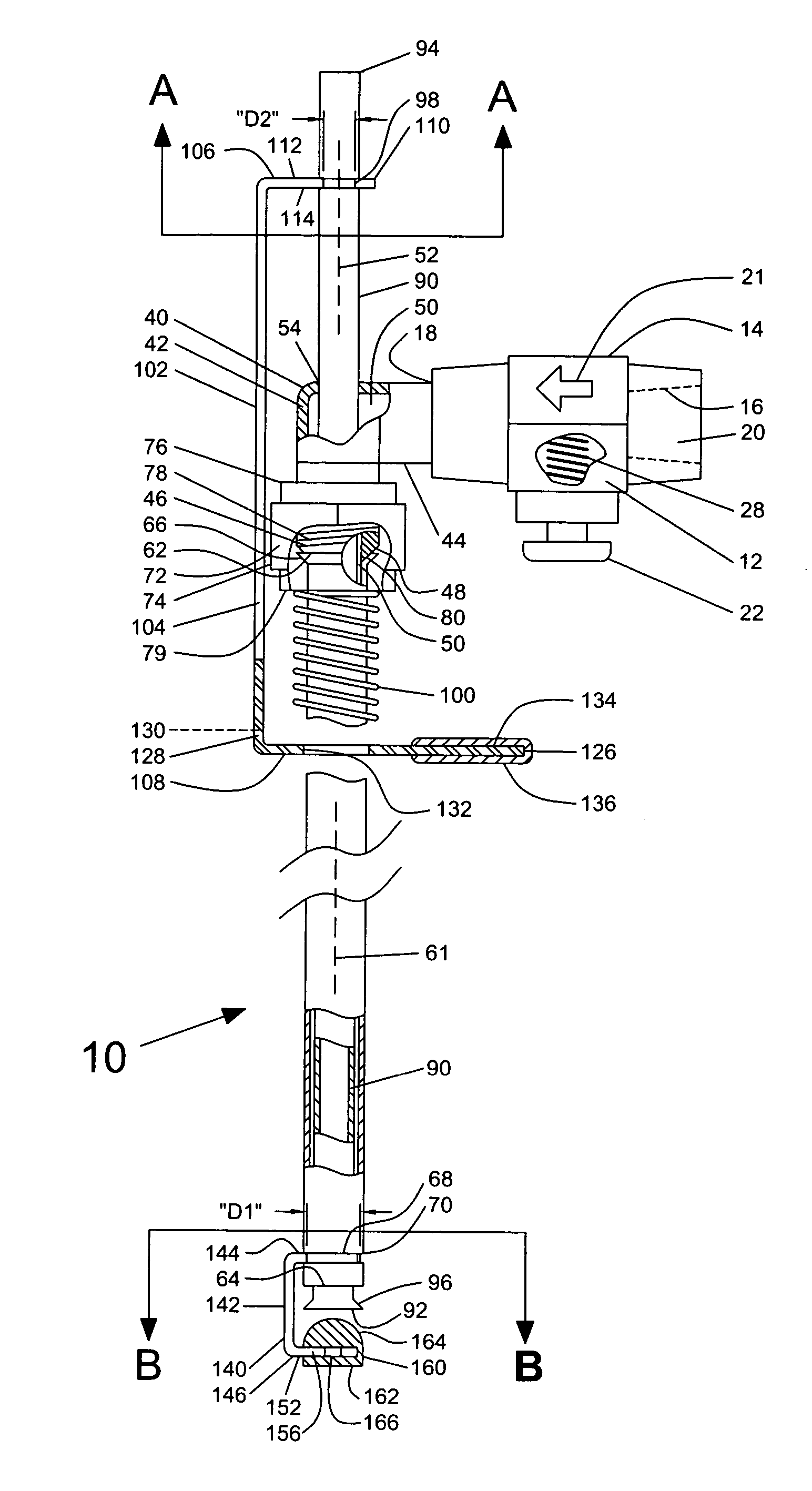Bottle filler
a filler and bottle technology, applied in the field of bottle filling devices, can solve the problems of beer adversely affecting flavor and shelf life, too much carbonation loss from foaming leaving the beer flat, unsatisfactory yeast sediment in the bottom of each bottle, etc., and achieves the effects of reducing or eliminating sharp bends and valves, easy sanitization, and intuitive us
- Summary
- Abstract
- Description
- Claims
- Application Information
AI Technical Summary
Benefits of technology
Problems solved by technology
Method used
Image
Examples
Embodiment Construction
[0012] Referring to prior art FIG. 3, prior art numerical appear as primed numbers (′) a common prior art counter-pressure bottle filler (CPBF) 10′ is shown. CPBF 10′ is comprised of commercially available valves, fittings and tubing. Beer valve 140′ is connected to the liquid out 2′ on a keg 1′. CO2 valve 12′ is connected to CO2 tank 3′ which is also connects CO2 to the keg 1′. A bleed valve 6′ is connected to a beer stem 7′ and also to a CO2 bleed stem 8′. A stopper 9′ seals against bottle 5′.
[0013] Referring to FIG. 1 having sections A-A and B-B and FIG. 2, the preferred embodiment is shown. A keg or container 1 of liquid to be drained having an outlet 2, a CO2 tank 3 having an outlet 4 and a bottle 5 are partially shown. A bottle filler assembly 10 is shown. The bottle filler assembly includes a CO2 valve 12 of conventional construction. In this application, the CO2 valve 12 is made of a brass material, but as an alternative could be stainless steel or copper or another materia...
PUM
| Property | Measurement | Unit |
|---|---|---|
| 90 degree angle | aaaaa | aaaaa |
| angle | aaaaa | aaaaa |
| angle | aaaaa | aaaaa |
Abstract
Description
Claims
Application Information
 Login to View More
Login to View More - R&D
- Intellectual Property
- Life Sciences
- Materials
- Tech Scout
- Unparalleled Data Quality
- Higher Quality Content
- 60% Fewer Hallucinations
Browse by: Latest US Patents, China's latest patents, Technical Efficacy Thesaurus, Application Domain, Technology Topic, Popular Technical Reports.
© 2025 PatSnap. All rights reserved.Legal|Privacy policy|Modern Slavery Act Transparency Statement|Sitemap|About US| Contact US: help@patsnap.com



